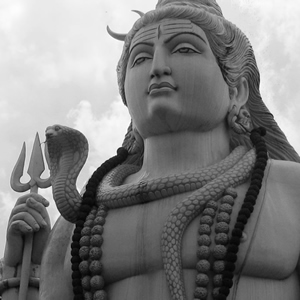Matrikas (Matrika singular, Sanskrit: mātṝkā, "mother"), also called Matara (Sanskrit: mātaraḥ plural) and Matri (mātṛ, singular), is a group of Hindu goddesses who are always depicted together. Since they are usually depicted as a heptad, they are called Saptamatrika(s) (Sanskrit: saptamātṝkāh, "seven mothers"): Brahmani, Vaishnavi, Maheshvari, Indrani, Kaumari, Varahi, Chamunda and Narasimhi. However, they may sometimes be eight (Ashtamatrika(s): ashtamātṝkāh, "eight mothers"). Whereas in South India, Saptamatrika worship is prevalent, the Ashtamatrika are venerated in Nepal.
The Matrikas assume paramount significance in the goddess-oriented sect of Hinduism, Tantrism. In Shaktism, they are "described as assisting the great Shakta Devi (goddess) in her fight with demons." Some scholars consider them Shaiva goddesses. They are also connected with the worship of warrior god Skanda. In most early references, the Matrikas are described as having inauspicious qualities and often described as dangerous. They come to play a protective role in later mythology, although some of their inauspicious and wild characteristics still persist in these accounts. Thus, they represent the prodigiously fecund aspect of nature as well as its destructive force aspect.
In the 6th century encyclopedia Brihat-Samhita, Varahamihira says that "Mothers are to be made with cognizance of (different major Hindu) gods corresponding to their names." They are associated with these gods as their spouses or their energies (Shaktis). Originally believed to be a personification of the seven stars of the star cluster the Pleiades, they became quite popular by the seventh century and a standard feature of goddess temples from the ninth century onwards.





